http://www.rhci-online.net/radiogram/radiogram.htm
RSID: <<2019-03-
http://www.rhci-online.net/radiogram/radiogram.htm
RSID: <<2019-03-
31T01:30Z MFSK-64 @ 5960000+1500>>
Here in Washington DC, while we wait for the famous cherry
blossoms, the magnolias are in full bloom ...
Sending Pic:136x82C;
|
|
|
From bit.ly/2HS3Zw2
Please report decode to
themightykbc@gmail.com

RSID: <<2019-03-
29T20:31Z MFSK-32 @ 7780000+1500>>
Shortwave Radiogram now changes to MFSK64 ...
RSID: <<2019-03-29T20:35Z
MFSK-64 @
7780000+1500>>
This is Shortwave Radiogram in MFSK64
Please send your reception report to
radiogram@verizon.net
From New Atlas:
Hybrid cathodes improve energy density of lithium-sulfur
batteries
Michael Irving
26 March 2019
Thanks to their better energy density and light weight,
lithium-sulfur batteries hold a lot of promise as a potential
successor to the time-honored lithium-ion batteries. But there
have been growing pains, and the emerging technology has its own
problems to overcome. Now, engineers have developed a new type of
hybrid cathode for a lithium-sulfur battery that seems to boast
better energy density than existing versions of both lithium-ion
and lithium-sulfur batteries.
Normally, the sulfur in a lithium-sulfur battery is in the
cathode, and these are built in one of two ways. Unfortunately
though, there's a trade-off to be made – they can either have a
high energy density in terms of weight (gravimetric), or in terms
of volume (volumetric), but not both. In the most basic sense,
that means your battery is either small but heavy, or light but
large.
And that's the problem targeted by the new study, involving
researchers from MIT, the Samsung Advanced Institute of
Technology, Tongji University, the Chinese Academy of Sciences
and the Songshan Lake Materials Laboratory.
The researchers built their new hybrid sulfur cathode in an
attempt to get the best of both worlds. The solid cathode is made
of a combination of particles of pure sulfur and Chevrel-phase
molybdenum sulfide, compressed together. Because the end result
is highly electrically conductive, it doesn't need as much carbon
– it only has about 10 percent, compared to the 20 or 30 percent
needed in other sulfur cathodes.
Using the new cathode, the team built a three-layer pouch battery
with a 1,000-mAh capacity, and says it already outperforms
existing battery technology in some ways, even before it's been
optimized. Generally, the energy density of commercial
lithium-ion batteries tops out at 265 watt-hours per kilogram and
700 watt-hours per liter. Current lithium-sulfur batteries,
meanwhile, can reach 400 watt-hours in both regards.
The new lithium-sulfur battery can currently reach over 360
watt-hours per kg and 581 per L, meaning it already has a better
gravimetric energy density than lithium-ion, and a better
volumetric density than other lithium-sulfur devices. The team
believes with more work the new design should hit 400 watt-hours
per kg and 700 per L.
But the new lithium-sulfur cathode has one major disadvantage:
lifespan. That's a fairly common problem with these batteries,
and the researchers say they're working on improving the overall
cell design to overcome the issue. Other teams are tackling it by
improving the other end – the lithium anode.
The research was published in the journal Nature Energy.
https://newatlas.com/hybrid-cathode-lithium-sulfur-battery-energy-density/59014/
Image: The molecular structure of molybdenum sulfide, one of the
materials in the new lithium-sulfur battery cathode ...
Sending Pic:190x183C;
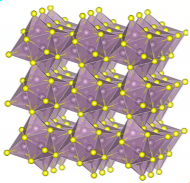
This is Shortwave Radiogram in MFSK64
Please send your reception report to
radiogram@verizon.net
This week's images ...
"Capitolhenge." During spring equinox, the light of sunrise
shines straight through the U.S. Capitol in Washington. From
bit.ly/2uzZxdK ...
Sending Pic:207x166C;

A dog surveys midtown Manhattan, 17 December 1975. From
nyti.ms/2WQPNbO ...
Sending Pic:303x155;
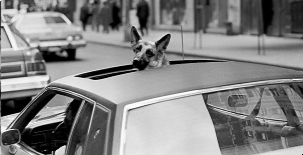
Commuters are seen through the window of a public bus as they
travel in central Vinnytsia, Ukraine. From
bit.ly/2I3ditr ...
Sending Pic:210x129C;
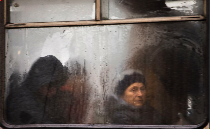
"Butterfly weed are full of nectar and pollen to attract hoards
of the beneficial insects. Also known as orange milkweed, the
plant is native to North America." From Deutsche Welle's "Why
Weeds Should be Welcomed"
bit.ly/2TDC8SN ...
Sending Pic:165x210C;

Colorful and, apparently, edible, from the restaurant Odette in
Singapore. From CNN's "Asia's 50 best restaurants in 2019"
cnn.it/2HIu7dB ...
Sending Pic:208x149C;

A white-banded cleaner shrimp hopped into the mouth of a grouper.
From
bit.ly/2TDTe2F ...
Sending Pic:216x144C;
Daffodils along Rock Creek Parkway in Washington DC, originally
planted by Lady Bird Johnson. From
bit.ly/2V4aVdl ...
Sending Pic:189x187C;

Our painting of the week is a spring landscape by Ioan Popei.
From bit.ly/2Ugoo4G ...
Sending Pic:210x155C;

Shortwave Radiogram now returns to MFSK 32 ...
RSID: <<2019-03-29T20:54Z
MFSK-32 @
7780000+1500>>
This is Shortwave Radiogram in MFSK32
Please send your reception report to
radiogram@verizon.net
|
MFSK-32 @ 1500 Hz:
From
swissinfo.ch: |
MFSK-32 @ 2200 Hz:
Desde
swissinfo.ch: |
This is Shortwave Radiogram in MFSK32 ...
Transmission of Shortwave Radiogram is provided by:
WRMI, Radio Miami International, http://wrmi.net
WINB Shortwave, http://www.winb.com/
and
Space Line, Bulgaria, http://spaceline.bg
Please send reception reports to radiogram@verizon.net
And visit http://swradiogram.net
Twitter:
@SWRadiogram
I'm Kim Elliott. Please join us for the next Shortwave
Radiogram.
|
Ending song: https://www.midomi.com/index.php?action=main.track&track_id=100010289000347257&from=voice_search Electric Light Orchestra - Telephone Line |
http://www.rhci-online.net/radiogram/radiogram.htm
|
QTH: |
D-06193 Petersberg (Germany/Germania) |
|
|
Ant.: |
Dipol for 40m-Band & Boomerang Antenna 11m-Band |
|
|
RX for RF: |
FRG-100B + IF-mixer & ICOM IC-R75 + IF-mixer |
|
|
Software IF: |
con STUDIO1 - Software italiano per SDR [S-AM-USB/LSB] + beta 11 Version 2.80 (August 21, 2018) - for scheduled IF-recording |
|
|
Software AF: |
Fldigi-4.0.18 + flmsg-4.0.7 images-fldigifiles on homedrive.lnk |
|
|
OS: |
German XP-SP3 with support for asian languages |
German W7 32bit + 64bit |
|
PC: |
MEDION Titanium 8008 (since 2003) [ P4 - 2,6 GHz] |
MSI-CR70-2MP345W7 (since2014) [i5 -P3560 ( 2 x 2,6GHz) ] |
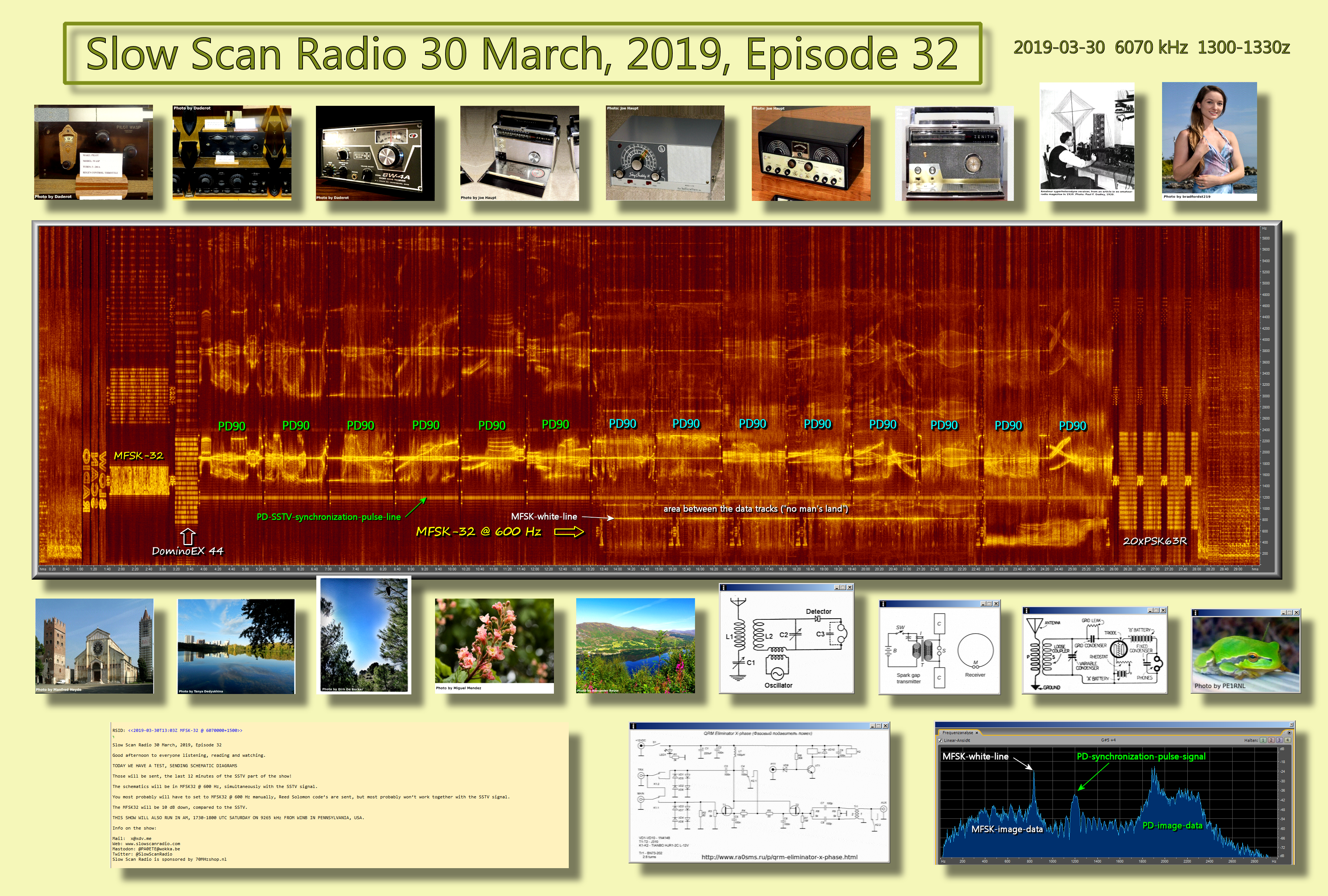
RSID: <<2019-03-30T13:03Z MFSK-32 @ 6070000+1500>>
RSID: <<2019-03-30T13:03Z MFSK-32 @ 6070000+1500>>
Slow Scan Radio 30 March, 2019, Episode 32
Good afternoon to everyone listening, reading and watching.
TODAY WE HAVE A TEST, SENDING SCHEMATIC DIAGRAMS
Those will be sent, the last 12 minutes of the SSTV part of the show!
The schematics will be in MFSK32 @ 600 Hz, simultaneously with the SSTV signal.
You most probably will have to set to MFSK32 @ 600 Hz manually, Reed Solomon
code’s are sent, but most probably won’t work together with the SSTV signal.
The MFSK32 will be 10 dB down, compared to the SSTV.
THIS SHOW WILL ALSO RUN IN AM, 1730-1800 UTC SATURDAY ON 9265 kHz FROM WINB IN
PENNSYLVANIA, USA.
Info on the show:
Mail: x@xdv.me
Web: www.slowscanradio.com
Mastodon: @PA0ETE@wokka.be
Twitter: @SlowScanRadio
Slow Scan Radio is sponsored by 70MHzshop.nl
de k
RSID: <<2019-03-30T13:35Z DominoEX 44 @ 6070000+1500>>
RSID: <<2019-03-30T13:35Z DominoEX 44 @ 6070000+1500>>
Slow Scan Radio 30 March, 2019, Episode 32
Good afternoon to everyone listening, reading and watching.
TODAY WE HAVE A TEST, SENDING SCHEMATIC DIAGRAMS
Those will be sent, the last 12 minutes of the SSTV part of the show!
The schematics will be in MFSK32 @ 600 Hz, simultaneously with the SSTV signal.
You most probably will have to set to MFSK32 @ 600 Hz manually, Reed Solomon
code’s are sent, but most probably won’t work together with the SSTV signal.
The MFSK32 will be 10 dB down, compared to the SSTV.
THIS SHOW WILL ALSO RUN IN AM, 1730-1800 UTC SATURDAY ON 9265 kHz FROM WINB IN
PENNSYLVANIA, USA.
Info on the show:
Mail: x@xdv.me
Web: www.slowscanradio.com
Mastodon: @PA0ETE@wokka.be
Twitter: @SlowScanRadio
Slow Scan Radio is sponsored by 70MHzshop.nl
de k
RSID: <<2019-03-30T13:15Z MFSK-32 @ 6070000+0600>>
RSID: <<2019-03-30T13:15Z MFSK-32 @ 6070000+0600>>
Sending Pic:356x270;
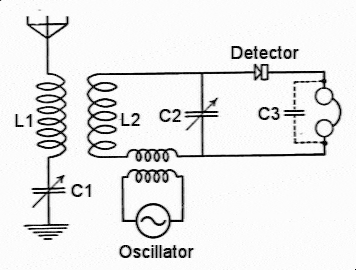
RSID: <<2019-03-30T13:17Z MFSK-32 @ 6070000+0600>>
RSID: <<2019-03-30T13:17Z MFSK-32 @ 6070000+0600>>
Sending Pic:320x229;
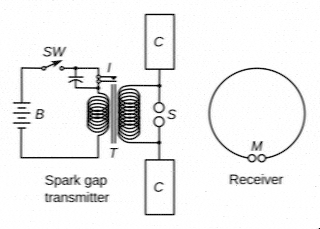
RSID: <<2019-03-30T13:18Z MFSK-32 @ 6070000+0600>>
RSID: <<2019-03-30T13:18Z MFSK-32 @ 6070000+0600>>
Sending Pic:384x209;
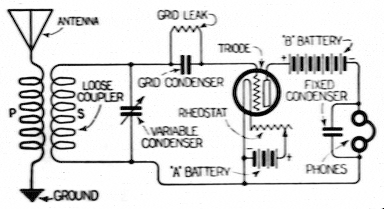
RSID: <<2019-03-30T13:20Z MFSK-32 @ 6070000+0600>>
RSID: <<2019-03-30T13:20Z MFSK-32 @ 6070000+0600>>
Sending Pic:695x353;
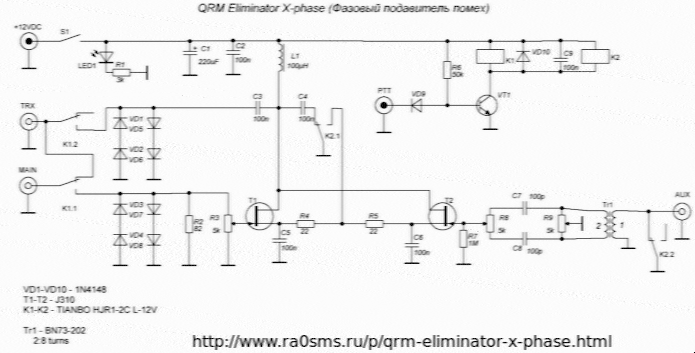
RSID: <<2019-03-30T13:24Z MFSK-32 @ 6070000+0600>>
RSID: <<2019-03-30T13:24Z MFSK-32 @ 6070000+0600>>
Sending Pic:288x201C;

RSID: <<2019-03-30T13:27Z 20xPSK63R @ 6070000+1500>>
RSID: <<2019-03-30T13:27Z 20xPSK63R @ 6070000+1500>>
Shortwave Radiogram Transmission Schedule
UTC Day UTC Time Frequency Transmitter site
Friday 1500 1530 UTC 13755 kHz DRM* WINB
Pennsylvania
Friday 2030 2100 UTC 7780 kHz WRMI
Florida
Saturday 0230 0300 UTC 9265 kHz WINB Pennsylvania
Saturday 1400 1430 UTC 9400 kHz Space Line Bulgaria
Sunday 0800 0830 UTC 5850 7730 kHz WRMI Florida
Sunday 2330 2400 UTC 7780 kHz WRMI Florida
Slow Scan Radio transmits SSTV images and text modes Saturdays at 1300 1330 UTC
on 6070 kHz and 7440 kHz via Channel 292 in Germany. Also Saturday 1730 1800 UTC
on 9265 kHz via WINB Pennsylvania. The website is http://www.slowscanradio.com.
Reception reports to
x@xdv.me.
The Mighty KBC transmits to Europe Saturdays at 1300 1400 UTC on 11600 kHz from
Bulgaria, with the minute of MFSK at about 1330 UTC (if you are outside of
Europe, listen via websdr.ewi.utwente.nl:8901/ ). And to North America Sundays
at 0000 0200 UTC (Saturday 7 9 pm
EST) on 5960 kHz, via Germany. The minute of MFSK is at about 0130 UTC. Reports
to Eric: themightykbc@gmail.com . See also http://www.kbcradio.eu/ and https://www.facebook.com/TheMightyKbc/.
“This is a Music Show” is the newest addition to digital modes via analog
shortwave. Most of the show is a music show, but the host transmits some MFSK
text and image near the end of the broadcast. It’s transmitted on WRMI, 5850
kHz, Thursday 0100 0200 UTC (Wednesday
evening in the Americas). Also look for a waterfall ID at the beginning of the
show.
Franco, HB9OAB, is transmitting digital SSTV in the KG STV format via WINB
(Pennsylvania) analog, Saturdays 2200 2215 UTC, 9265 kHz. Best reception will be
via receivers in the western USA.
New York and Pennsylvania NBEMS nets. Most weekends, as KD9XB, I check in to the
New York NBEMS (Narrow Band Emergency Messaging Software) net Saturday at 1200
UTC on 3584 kHz USB, and the Pennsylvania NBEMS net Sunday at 1200 UTC on 3583
kHz USB (with out of state
check ins now starting at 1130 UTC). Check ins are in Thor 22 (or maybe IFKP),
and messages are in MFSK32 (PA NBEMS is experimenting with Thor 50x1 for
messages). Messages usually use the Flmsg add on to Fldigi. If you are a radio
amateur in eastern North America,
feel free to check in. Outside the region, use an SDR in the eastern USA to tune
in and decode. You do not need Flmsg to check in, and most of the messages can
be read without Flmsg. If you can decode the net, send me an email to radiogram@verizon.net
, or tweet to
@SWRadiogram , and I will let them know you are tuned in.
de k

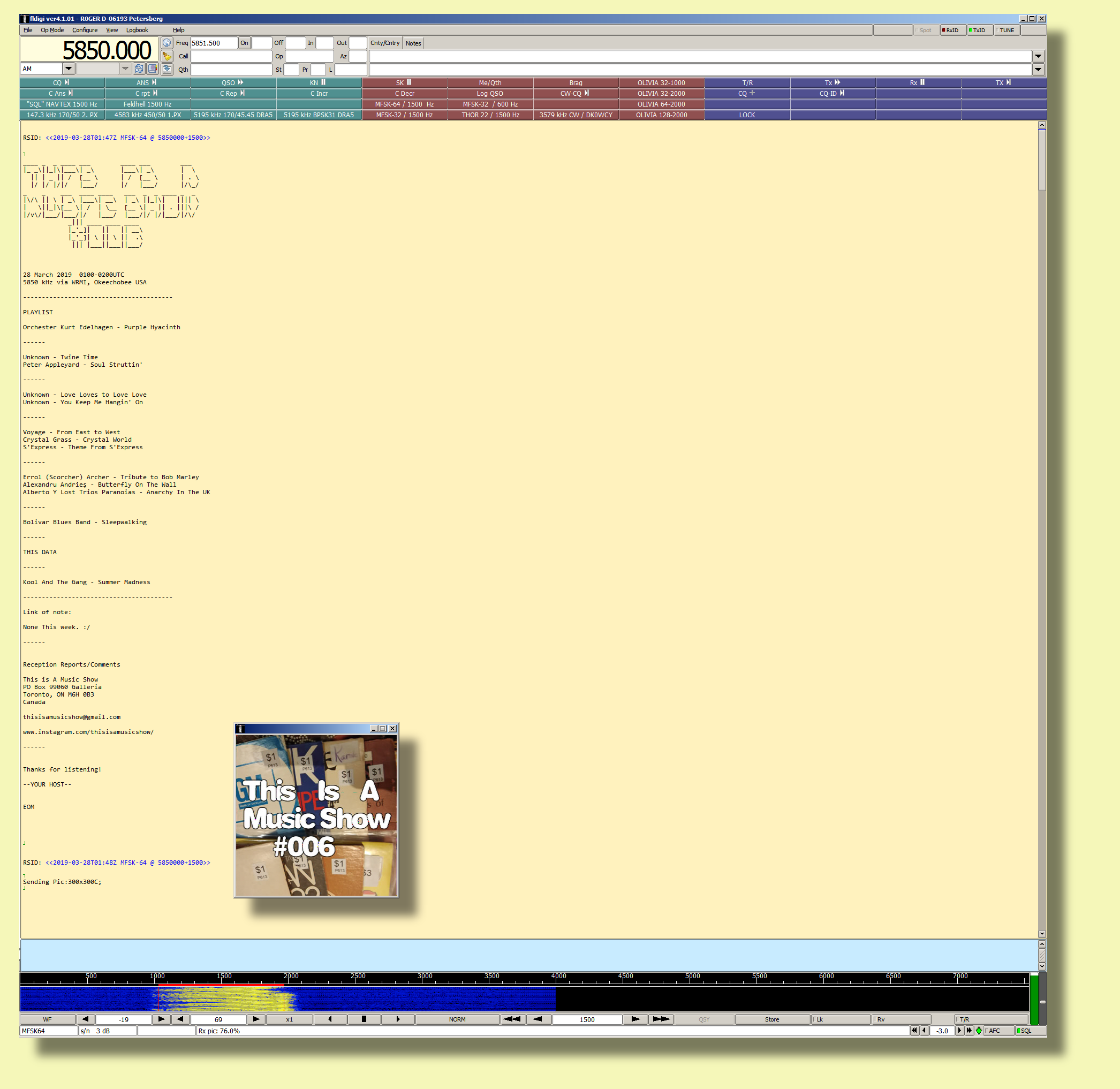
RSID: <<2019-03-28T01:47Z
MFSK-64 @
5850000+1500>>
28 March 2019 0100-0200UTC
5850 kHz via WRMI, Okeechobee USA
----------------------------------------
PLAYLIST
Orchester Kurt Edelhagen - Purple Hyacinth
https://www.youtube.com/watch?v=PKj6FCl9TYM
[first performance] "Jazz
Time Baden-Baden" / "jeden 2. Mittwoch über die Sender des SWF"
------
Unknown - Twine Time
Peter Appleyard - Soul Struttin'
https://www.youtube.com/watch?v=w4kgVTfvl98
------
Unknown - Love Loves to Love Love
unknown artist, cover from:
https://www.youtube.com/watch?v=2G5HpRiO2_k
LULU - Love Loves to Love Love
Unknown - You Keep Me Hangin' On
unknown artist, cover from:
https://www.youtube.com/watch?v=t3bjMtqpGBw
The Supremes-You Keep Me Hangin' On
------
Voyage - From East to West
https://www.youtube.com/watch?v=ZgPe1MdL7VQ
Voyage - From East To West (1977
Lp Version Audio Redone By
Dj
Cole)
Crystal Grass - Crystal World
https://www.youtube.com/watch?v=5VeG9dFzVbc
S'Express - Theme From S'Express
https://www.youtube.com/watch?v=IpeRShWMdYM
------
Errol (Scorcher) Archer - Tribute to Bob Marley
https://www.youtube.com/watch?v=llV6fu4WHyM
Alexandru Andrieș - Butterfly On The Wall
https://www.youtube.com/watch?v=mLGNjwFsrWw
Alberto Y Lost Trios Paranoias - Anarchy In The UK
https://www.youtube.com/watch?v=-oTj4BBpiIk
------
Bolivar Blues Band - Sleepwalking
http://www.rekord.net/mpIII/mp3/audio.29537.1.mp3
------
THIS DATA
------
Kool And The Gang - Summer Madness
https://www.youtube.com/watch?v=wGDqUtVOWxg
----------------------------------------
Link of note:
None This week. :/
------
Reception Reports/Comments
This is A Music Show
PO Box 99060 Galleria
Toronto, ON M6H 0B3
Canada
thisisamusicshow@gmail.com
www.instagram.com/thisisamusicshow/
------
Thanks for listening!
--YOUR HOST--
EOM
RSID: <<2019-03-28T01:48Z
MFSK-32 @
5850000+1500>>
Sending Pic:300x300C;
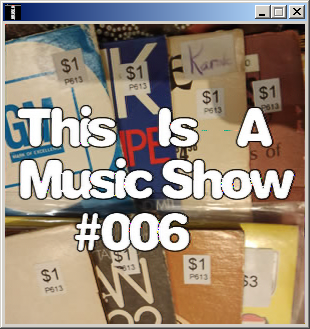
https://www.darc.de/nachrichten/radio-darc/
Sendeplätze von RADIO DARC auf
Bürger-Radios / Offenen Kanälen:
Berlin: „Ohrfunk“ auf 88,4 MHz mit 1 KW und Potsdam 90,7 MHz/100 W, Kabel und Livestream – sonntags 08.00 Uhr Ohrfunk aus Berlin – das Programm von und für blinde und sehbehinderte Menschen
„Radio
Ostfriesland“ auf 94,0 & 87,7 & 103,9 MHz MHz, Kabel und
Livestream – sonntags 14.05 Uhr
Berlin: „Alex Radio“ auf 91,0 MHz mit 0,4 KW, Kabel und Livestream – freitags 15.00 Uhr 14-tägig im Wechsel mit Welle370, dem Funkerbergradio aus Königswusterhausen b. Berlin
Bremen: „Radio Weser.TV Bremen“ auf 92,5 MHz mit 0,2 KW, Kabel und Livestream - sonntags 17.00 Uhr
Bremerhaven „Radio
Weser.TV Bremerhaven“ auf 90,7 MHz mit 0.2 kW, Kabel und
Livestream – freitags 12.00 Uhr
Greifswald: „radio 98eins/NB-Radiotreff 88,0“ auf 98,1 MHz mit 0,2 KW – sonntags 14.00 Uhr und dienstags 16.00 Uhr http://82.193.248.59:8000/radio98eins.mp3
Malchin : „Studio Malchin/NB-Radiotreff 88,0“ auf 98,7 MHz mit 0,1 KW, Livestream - sonntags 14.00 Uhr und dienstags 16.00 Uhr http://82.193.248.59:8000/radio98einsonair
Neubrandenburg: „NB-Radiotreff 88,0“ auf 88,0 MHz mit 0,8 KW, Livestream – sonntags 14.00 Uhr und dienstags 16.00 Uhr http://82.193.248.59:8000/live192
Weimar: „Radio Lotte“ auf 106,6 MHz mit 2 KW, Kabel, Mediathek und Livestream - montags 16.00 Uhr und samstags 18.00 Uhr
Eisenach: „Wartburg-Radio“ auf 96,5 MHz mit 0,2 KW und Livestream - dienstags 21.00 Uhr u freitags 10.00 Uhr
Nordhausen: „Radio Enno“ auf 100,4 MHz mit 0,1 KW, Kabel und Livestream – sonntags 20.00 Uhr und mittwochs 21.00 Uhr
Saalfeld, Rudolstadt, Blankenburg: „Radio SRB“ auf 105,2 MHz mit 0,3 KW und Livestream – mittwochs 22.00 Uhr
Jena: „Radio OKJ“ auf 103,4 MHz mit 0,32 KW, Kabel und Livestream – sonntags 12.00 Uhr
Hamburg: „Tide Radio“ auf 96,0 MHz mit 50 Watt und DABplus mit 4KW, Kabel, Livestream und Mediathek (www.tidenet.de/radio/nachhoeren) – mittwochs 18.00 Uhr
Nordhessen: „RundFunk Meissner“ aus Eschwege auf 96,5 MHz mit 0,32 KW, aus Witzenhausen auf 99,7 MHz mit 0,5 KW und DABplus im Multiplex 6A mit 4 mal 5 KW, sowie im Livestream – sonntags 15.05 Uhr und montags 16.05 Uhr
Graz (Steiermark/Österreich): „Radio Helsinki – Freies Radio GRAZ“ auf 92,6 MHz mit 1KW, Livestream – dienstags 15.00 Uhr
Sendeplätze von RADIO DARC auf Internet-Radios:
Jeden Sonntag 18:00 Uhr MEZ auf dem
Internet-Sender "SATzentrale - Das Radio"
Webseite:
www.satzentrale.de/szradio
Jeden Montag 19:00 Uhr MEZ auf dem Internet-Sender "afu-Webradio"
Jeden Montag 22:00 Uhr MEZ auf dem
Internet-Sender "SVR-Hanseradio" in Stralsund.
Webseite ist
www.svr-hanseradio.de
Jeden Dienstag 22:00 Uhr MEZ auf dem Internet-Sender "Radio 440 Hz"
Jeden Mittwoch 19:00 MEZ auf dem Internet-Sender "Radio Trista" www.radio-trista.de.
Jeden Mittwoch 20:00 Uhr MEZ auf
dem Internet-Sender "SATzentrale - Das Radio"
Webseite:
www.satzentrale.de/szradio
Jeden Donnerstag 18:00 MEZ auf dem Internet-Sender "Radio ISW Plus"
Jeden Donnerstag 19:00 Uhr MEZ auf dem Internet-Sender "afu-Webradio"
Jeden Samstag 19:00 Uhr MEZ auf dem
Internet-Sender "SATzentrale - Das Radio"
Webseite:www.satzentrale.de/szradio
Radio UNICC (Chemnitz) Montag 21.00 Uhr
http://stream.radio-unicc.de:8000/unicc_xq.mp3
https://onlineradiobox.com/de/unicc/playlist/6?cs=de.unicc